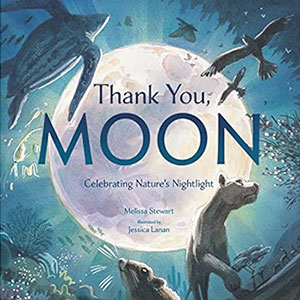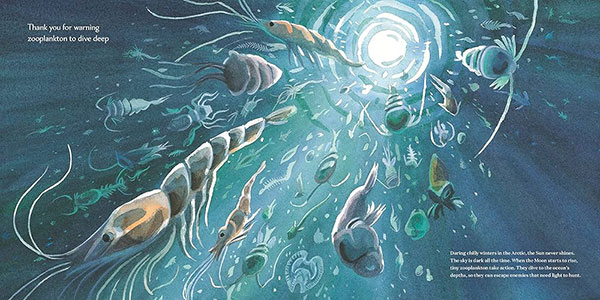
Celebrating Nature’s Nightlight
Night is my favorite time of day. Dusk is exciting, romantic, and soothing. I remember it as a signal that it was probably time to stop playing outside and head indoors. When the last bit of daylight disappears, everything looks different. This book is about the many ways in which moonlight affects animal behavior … including humans.
Our home, Earth, depends upon the Moon. The book opens,
“Thank you, Moon, for being Earth’s constant companion in space
and making life on our planet possible.”
In short, easily readable, and fascinating paragraphs on each spread we learn new information about animal behavior. Various creatures, including turtles and beetles and birds, are active at night, dependent on the light of the moon.
We learn that the Moon’s light protects. The waning moon triggers migration. Coral spawn when the Moon is full to increase “the odds that plenty of coral larvae will form and grow into adults.” I learned so much I did not know throughout this book.
Back matter sets us straight on where the Moon’s light comes from and depicts the phases of the moon.
In the book’s final pages, each entity mentioned in the text is described with short, factual statistics and a close-up.
Melissa Stewart’s writing is confident, concise, and engaging. When writing short paragraphs, word choice is essential, and she writes with such beguiling description that the reader is drawn deeply into each illustration, looking for confirmation and finding it.

Jessica Lanan’s illustrations are deep, stunning shades of blue with warm tones of purple, orange, and green where the habitat is best conveyed in those colors. Many of the creatures are portrayed mid-action, giving a vibrancy to the text.
The text and illustrations invite multiple readings to savor everything we learn about the many ways the Moon is an essential part of life on Earth.

